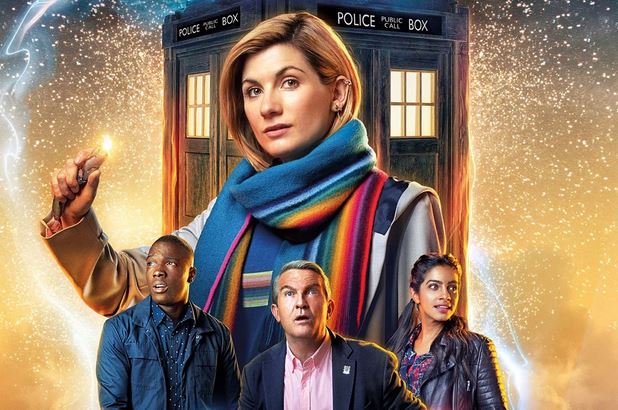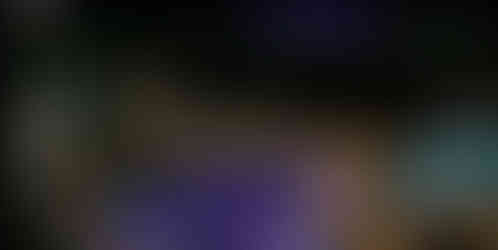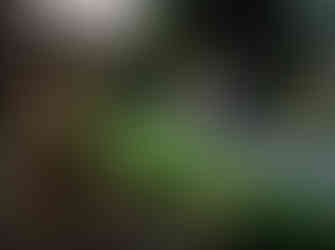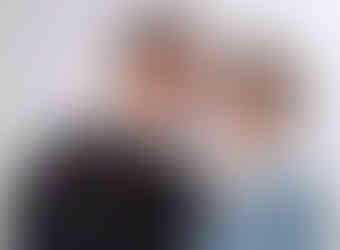NEW YEAR, NEW WHO
- David Moloney
- Aug 30
- 14 min read
Terror of the Autons vs. Resolution

I needed to take another break from this blog over the last few months. Each post takes a long time to put together – finding the time to watch each story, then to write a short essay on each of them, capture the necessary screenshots and load the whole thing on to the website and Substack – and while I enjoy it all, life goes on and there so often seems to be something much more important to do (such as the job that contributes to the bills). Full disclosure: earlier this year I did watch a pair of stories (The Face of Evil and Closing Time), then started the first of another pair (The Armageddon Factor), but I couldn’t find a suitable opportunity to write up my notes on the first couple then my enthusiasm for Armageddon ran dry after a couple of episodes, so I took that all as a sign to put it on hold for a while. In that time I have mostly been writing the text of a book (The Women’s Football Fan Yearbook 2026) and along with my colleagues at work have set wheels in motion for the launch of a new book imprint focused on special interests and fandoms. The new list, Herne Books, already has a couple of Doctor Who-related titles commissioned, so I’ll probably make further mention of those closer to their publication next spring.
Anyway, here I am again, and over the last week I’ve enjoyed watching and reviewing Terror of the Autons and Resolution. I really wanted to title this blog Yaz and the Plastic Population, but it didn’t quite work because Yaz doesn’t really have much to do this time round, so I’ve gone with the more pedestrian New Year, New Who.
Connections
I’m following a slightly different format to previous blog entries, and looking for the connections between the two stories before I write my reviews of each of them. This is the part in which I draw lines between twentieth- and twenty-first-century Doctor Who. Sometimes the lines have important meaning, sometimes they’re spurious, some of them were probably intended by the show’s creators and others were more than likely coincidental.
The first obvious connection is that Terror of the Autons and Resolution were both broadcast at the start of a brand new year. Episode one of the Third Doctor story was first shown on Saturday 2 January 1971, and the Thirteenth Doctor’s adventure went out 47 years and 364 days later, on 1 January 2019.
Both stories make reference to a relative of one of the Doctor’s companions. Ryan’s dad Aaron is a central player in Resolution, and we are told that Jo has ‘relatives in high places’ (revealed in later adventures to be her father) which enabled her to get a job with UNIT. Further Daddy issues are on display at the plastics factory, where the founder and owner John Farrel expresses displeasure at the new methods being introduced by his son Rex.
The monsters in each story are a Dalek and the Nestene Intelligence, each of which in their unadapted forms have a hideous tentacled appearance, or, in the Doctor’s words, ‘analogous to a cephalopod’. The grisly Dalek is very much on show in Resolution, but we don’t actually see the basic Nestene form in Terror of the Autons (unless the glowing lights summoned by the Master are supposed to represent its octopoidal form). However, Peter Brookes’s cover to the original Target novelisation gives us a pleasing sort of idea.
In both stories the remains of an alien lifeform that previously spearheaded a potential invasion of Earth are reanimated, accidentally, by energy released from human lab equipment. In Terror of the Autons, the heat from the Doctor’s Bunsen burner brings the Auton troll toy to life, and in Resolution ultraviolet light from Lin and Mitch’s excavation kit reactivates the Dalek mutant.
Significant components that aid the monsters’ revival plan are violently liberated from military sources. The Master steals a Nestene sphere from the National Space Museum (where it is carelessly on loan from UNIT), and possessed Lin raids UNIT’s Black Archive to steal a Dalek gun.
In the process of renewal, the creatures use materials manufactured by humans to, in the words of Mike Yates, ‘make themselves bodies when they need them’. The Autons occupy anything made of plastic, and the Dalek constructs a new casing for itself from industrial farming equipment.
‘Bullets can’t stop them!’ yells the Doctor as the Brigadier and Mike fire revolvers at the Auton policemen. In another quarry-based shoot out, nearly fifty years later, army soldiers unleash heavy-duty firearms on the junkyard Dalek, which is unscathed by the bullets.
The culmination of the aliens’ plans in both stories sees them seize control of an array of giant radio antenna dishes and realign them to make contact and summon to Earth an alien invasion.
For a pair of stories that might at first seem like chalk and cheese, the similarities in basic plotline – at least that governing the actions of the monster-of-the-week – are remarkable. I expect a bit of study might turn up a few more Earth invasion adventures that contain similar elements. In addition to all the above it’s worth mentioning that both stories also make room for a young woman succumbing to alien mind control (although that’s hardly an unusual occurrence in Doctor Who), and a fake police officer driving a police car.
Terror of the Autons
By happy chance the Randomiser selected Terror of the Autons for me to watch on a relaxing day off work to mark my 55th birthday. The coincidence was that this was the first story produced and broadcast during my lifetime – apparently filming began on 17 September, 29 days after my own earthly debut, with the scene from episode three in which the ‘carnival’ Autons hand out plastic daffodils in a suburban shopping mall. The location used was Chalfont St Peter in Buckinghamshire, roughly fifteen miles from Muswell Hill where we lived at that time.

A fair bit of this story was shot on location so it’s an interesting one for me to watch and think that that was what my environment looked like when I was born. There’s plenty in Terror of the Autons that doesn’t really exist in Britain any more, at least not in an everyday sense. A circus with a leopardskin-clad black ‘strongman’ and dancing elephants, terrifying wallpaper, phone cords, and ‘chivalrous’ chauvinism (sexism is usually expressed a bit differently these days). But despite all that I do feel that there’s something familiar about this little screen world of south-east England, even though what we see is a few years earlier than any time of which I would have actual memories. There’s something a little bit rickety and uneven about the country lanes and hedgerows, the quarry, the red-brick factory and even the pile of packing crates behind which Jo hides rather unconvincingly from the Master, which I recognise as the landscape of my childhood. There’s an aura, a memory of a time and a place – the light, the lines, and I think I can almost smell it – that to a young mind seemed safe and simple while also full of adventure.
Terror of the Autons is generally considered to mark the launch of a new era of Doctor Who – only a year after its previous re-launch for the Third Doctor’s first season. Producer Barry Letts and script editor Terrance Dicks were in a position to realise their own vision for the show. They added Katy Manning, Roger Delgado and Richard Franklin to the regular cast, and developed a more dandyish tone. This applied not only to Jon Pertwee’s outfits, which gradually took on more colour and frills, but to the stories overall. Season Eight seems more fantastical and perhaps takes itself a little less seriously than Season Seven; it’s now closer in tone to The Avengers than Doomwatch. One can’t imagine the hovering city gent Time Lord apparition in the previous year’s opening story Spearhead from Space, for example, nor indeed the pantomimic villain that is the Master. This is the beauty of Doctor Who, however – its consistent ability to change its appearance while somehow remaining the same show. Both styles are great in their own right, and while I loved the intensity and melodrama of the previous season’s finale Inferno, I can see how this slightly more knockabout vibe might have broadened the programme’s Saturday teatime appeal.

Absolutely no time at all is wasted introducing us to the Master. He appears right at the top of the first episode, and his first line is the unambiguous ‘I am usually referred to as the Master.’, which seems at odds with his/her appearance in virtually every other story over the subsequent fifty-odd years. Rather than sliding so effortlessly into a narrative, the Doctor’s nemesis usually prefers a more complicated – some might say convoluted – entrance: disguises, clumsy pseudonyms, and weirdly ostentatious plans to take over the world. He does at least exit Terror the Autons at the end of episode four in more typically Masterly fashion, sending Mr Farrel Jnr out to surrender to the troops in a hastily-moulded rubber Master face-mask before making his escape in a large red and white bus (quite how UNIT failed to lose him in that in rural Buckinghamshire isn’t clear).

The story’s plot is also a bit bonkers, as the Master uses the Nestenes’ plastic-galvinising powers to conquer the world through the method of inflatable chairs, toy trolls and fake daffodils. Again, it’s a far showier Auton invasion than that attempted in Spearhead from Space; the Master’s role as supervillain seems similar to that of Joker or the Riddler in 1960s TV’s Batman – evil delivered with practical gags and a mischievous giggle. Incidentally, the imagery of teams of sinister characters with plastic smiles handing out flowers in Middle England has a nasty basis in reality: in the early seventies the Unification Church (known as ‘the Moonies’ after their founder Sun Myung Moon) were active in the UK, often fundraising and ‘recruiting’ (some claimed brainwashing) young acolytes through the selling of flowers in airports, towns and picturesque villages. I’m not sure how widespread or known these practices were when Terror of the Autons was written and filmed in 1970, so it’s possibly a coincidental allusion.

Like the Master, Jo Grant is also introduced to us in short order right at the start of the story. We learn straight away that she is neither tea lady nor ham-fisted bun-vendor, but a graduate of an unnamed school for spies where she trained in cryptology, safe-breaking and explosives. Later on, we see that she also knows a bit about martial arts, but less about hiding behind crates. Jo is a great character and it’s impossible not to like Katy Manning’s performance, especially considering – in this story and much of her subsequent three years on the show – she is almost always the only woman in the room.

Jo is involved in a nice couple of mirrored scenes I hadn’t noticed before in Terror of the Autons. In episode two she has a brief argument with Mike: ‘You all just tell me to keep out of the way. I’m not a child you know!’ ‘Well you’re acting like one!’ Then, in episode three, she tells the Doctor to ‘stop being childish’ when he gets cross at his failure to escape and kicks the TARDIS, hurting his foot. ‘What’s wrong with being childish? I like being childish.’ (It’s very similar to the scene in the Fourth Doctor’s first story, Robot, in which he hurts his hand trying to karate-chop a brick and Sarah accuses him of being childish. ‘Well of course I am. There’s no point in being grown up if you can’t be childish sometimes.’) Which all applies well to this more whimsical, colourful, cartoonish iteration of the Third Doctor era following the grittier Season Seven.
A few other points of note. The extended action sequence that spans the end of part two and the start of part three is really great. The cliffhanger reveal of the Auton policeman is pretty scary, and the subsequent shoot-out in the quarry, with the ‘HAVOC’ stunt team at the centre of it all, is proper exciting – definitely the sort of thing young viewers would want to re-enact in the playground.

The Doctor talking about dining at ‘the club’ with government minister ‘Old Tubby Rowlands’ is a bit annoying, as I never like to think of the Doctor as a friend of the establishment. But then, while watching Resolution, I thought that I could imagine Jodie Whittaker’s Thirteenth Doctor doing and saying exactly the same thing, and she was very much not a schmooze of the state. Wining and dining stuffy old government men in suits is quite possibly something she might do for a lark, or possibly as part of some darker strategy, so maybe the Third Doctor was just doing the same.

When the Doctor performs his alien autopsy on the Auton troll toy, it seems very odd that we don’t see him cutting the plastic creature open. The camera is focused on his face for the entire scene, with just a spoken explanation of what he’s doing. Perhaps the production team felt that cutting into a body with a scalpel actually wasn’t suitable for family viewing, but it doesn’t seem now as though it would have been more upsetting than, say, the chair suffocation, or the shooting of Farrel at the end.

Finally, that chat about hard-boiled eggs between telescope boffins Philips and Goodge in episode one is a bit surreal. ‘I told her again last night.’ ‘Mm?’ ‘Elsie. “Cut out the hard-boiled eggs,” I said. “Quite apart from their effects on my digestion, they're aesthetically boring.”’ Even odder is that when Goodge bites into his egg moments before being minimised by the Master’s Tissue Compression Eliminator, there’s a definite crunch. Did people hard-boiled eggs with the shell on in 1970? I’m glad I was born just too late for that.

Resolution
Resolution was first broadcast on New Year’s Day 2019, just 23 days after The Battle of Ranskoor Av Kolos, the final story of the Thirteenth Doctor’s first season, and exactly a year before the first part of Spyfall, the opening of her second. It was the first of a loose trilogy of Dalek-themed New Year specials, preceding 2021’s Revolution of the Daleks and 2022’s Eve of the Daleks, both of which I have already covered on this blog. It’s especially memorable for the introduction of a new-look Dalek (the ‘junkyard chic’ design), Ryan (unusually) claiming the principal character-development plotline, and the main guest star being Charlotte Ritchie, who turns up in nearly all our favourite shows these days. I thought she was very good in this, she was brilliant in Ghosts, and that’s all the more amusing after she had had to play one half of the most annoyingly saccharine couples ever to appear in Call the Midwife. Nurse Barbara Gilbert could have done with a Dalek mutant on her back to deal with the awful Reverend Dimple-Dumpling.
I can’t remember watching this story first time around, other than a dim recollection that I enjoyed it. There was lots that I’d forgotten about it – little wonder, as so much has happened, and changed, since the beginning of 2019 – so this was an interesting re-watch. I had completely memory-holed the idea that the excavated Dalek parts were subject of a legend dating back to the ninth century, when ‘an army of enemies came together’ to defeat a single Reconnaisance Scout Dalek and bury its constituent parts in secret locations around the globe. The episode’s Game of Thrones-style opening sequence surprised me, partly because I hadn’t remembered it but also because it seemed out-of-key with the few impressions of the story I’d retained. I suppose it creates a cinematic feel to the pre-credits appropriate to the show’s New Year’s Day billing, although something about it is a little off – the ‘Three Custodians’ seem like broadly-drawn characters from a fantasy universe, unrelated even through the course of time to the ‘real world’ of twenty-first century Sheffield to which we cut for the story proper.

But it all gets a lot better after that. Lin and Mitch, the archaeologists, are likeable co-stars for the TARDIS fam. Their burgeoning romance, unearthed together before Lin becomes a vessel for the alien menace, is cute and both characters get important roles to play in the subsequent story.

I’ve found through the course of keeping this blog that watching a New Series adventure immediately after a Classic Series one casts the differences in social and cultural attitudes in sharper relief. So Lin being an archaeologist, an unnamed women one of the badass Custodian warriors, Yaz a police officer and the Doctor a scientist (not to mention the Alpha player in every scene she’s in) probably didn’t catch my attention when I first watched Resolution in 2019 like it did this time round, hot on the heels of Terror of the Autons in which the only women are Jo – whose job is described simply as some general sort of ‘assistant’ – and Mrs Farrel, housewife.
All that said, the principal human storyline of Resolution is about dads and sons. Ryan’s estranged father Aaron turns up, having been absent for much of Ryan’s life and having failed to attend the funeral of Grace (his mum, Ryan’s gran, Graham’s wife). Resolution affords only a few short scenes in which to explore this difficult relationship – the main one being a tense airing of feelings between Ryan and Aaron in a café. We don’t learn a huge amount about why Aaron has failed to be there for Ryan, nor why he has tried to avoid the trauma of his own mother’s death, but we can speculate – and wonder what his relationship with his own father was like, for example. Later on there’s another moving scene in which Graham shows Aaron the box of his childhood toys and drawings which Grace had kept to remember him by. Aaron is visibly moved, some emotional barriers to come down, and he admits ‘I wish I was better at life, Graham.’ Thinking back to the Doctor in Terror of the Autons, here’s a clue to the importance of occasionally being childish. The inner child shouldn’t rule our lives but neither should it be completely silenced or consigned to the past; touching base with him or her once in a while can unlock some of the doors to better self-awareness.

I felt these were pretty good scenes, examples perhaps of what Chris Chibnall does best – mature, raw, complex relationship-based drama. Russell T Davies was good at relationship-writing too, but with a lighter, slightly folksier touch that is possibly better suited to the modern-day show. I think Chibnall creates strong characters with depth and subtlety, and it’s possible that they didn’t always fit that well in the whistle-stop format of single-episode Doctor Who stories.

Incidentally, I noticed earlier in the story that when Yaz implied Ryan’s relationship with his dad was ‘complicated’, the Doctor replied ‘Yeah, dads are. So I’ve heard.’ It wouldn’t have been apparent at the time, but this suggestion that the Doctor hasn’t known a father herself foreshadows the Timeless Child storyline that would start to develop in 2020, the following season. We would learn that the Doctor was ‘discovered’ as a child by Tecteun, who would bring them up in what we probably imagine was a maternal role, and there has never been any suggestion of a father-figure being on the scene.
There are only a couple of moments that I didn’t like so much in Resolution. The silly ‘no Internet’ scene – an unconvincing family distraught when the wi-fi went down – was an annoying and unnecessary cutaway, not as funny as it was intended to be. To me it came across as a bit preachy and condescending. The Internet has become an essential need for just about everyone these days, as we would discover during the lockdown periods of 2020 and 2021. And, having avoided it for much of story, Resolution eventually gave us one of those flying geese formation line-ups of the Doctor, companions and associates that became such an odd recurring feature of the Chibnall era. I’m not quite sure why this happened so much, as it looks really unnatural and peculiar. I guess it was a result of the showrunner’s tendency to overcrowd the TARDIS, but surely there were more imaginative ways to frame a large group of characters?
I haven’t yet written much about the Dalek in this story, but I thought it was well done, properly malevolent – and I imagine it must be difficult to keep writing original Dalek stories to a high level, there have been so many of them over the years. In its mutant form, hidden on Lin’s back, tentacles embedded in her neck, it was suitably creepy and terrifying. Then in its junkyard shell (the Lin-vessel building the Dalek casing out of spare parts in the dead farmer’s barn seemed a deliberate mirror of the Doctor building her sonic screwdriver in The Woman Who Fell to Earth), emitting a furnace-red glow, it became properly angry and hateful – an enemy to engage the attention of a dozy New Year audience.


The Dalek and the Doctor coming face-to-eyestalk for the first time (for Thirteen) ranks among the better of each of the Doctor’s initial encounters with their worst enemy. ‘Who are you? Identify!’ ‘Oh mate, I'm the Doctor. Ring any bells?’ It’s a great scene for Jodie Whittaker, whose portrayal of the Time Lord has probably been scrutinised more than any other actor’s, and a strong way with which to sign off her first full season as the series lead. We had to wait a whole year before we would see her and Team TARDIS in action again, but this encounter – and Resolution as a whole – left an impression that there was great potential to be fulfilled.












































































Comments